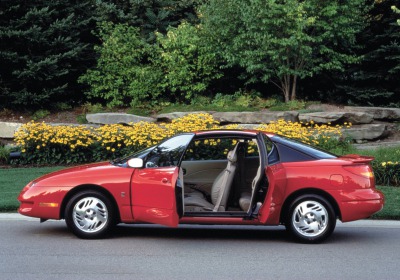Book Review: Car Guys vs Bean Counters
Thu, 28 Jul 2011Designers are the surprise heroes of a new book by former General Motors vice chairman Robert Lutz, called Car Guys vs. Bean Counters: The Battle for the Soul of American Business.
"The real car guys are in design," Lutz told me during his recent book tour.
Lutz helped create such hits as the PT Cruiser and Viper at Chrysler and was brought into General Motors in 2001 by CEO Rick Wagner to critique its future products. When, in August, 2001, then design chief Wayne Cherry showed him the line up for the future, he writes, he was appalled. Cherry was equally dismayed, but explained that these were the designs that made it past executives.
Lutz blames "systems thinking" and "brand management" ideas for the system. His villains are "vehicle line managers" whose careers were judged on meeting schedule and cost milestones, not product quality or ultimately, sales.
Lutz, sometimes called 'Maximum Bob' in Detroit, after the hanging judge in the 1991 novel of the same name by Elmore Leonard, says he encouraged designers. "I made sure the creative people had as strong a voice as possible," he says.
He kept Wayne Cherry an extra year past retirement, during which things improved. One result was the Cadillac Sixteen show car. He praises Ed Welburn and Franz von Holzhausen, the designer of the Pontiac Solstice concept that marked Lutz's stamp on things at GM. An unlikely heroine is Anne Asensio, brought to GM from Renault. According to Lutz, she was initially in charge of creating so-called theme vehicles to be translated into production versions. Lutz instead put her in charge of interiors and she battled suppliers and execs, he writes, to improve materials and design.
Lutz says he delivered on his promise to improve GM products, literally bringing luster back to the cars by changing paint methods. He eliminated "hiders," techniques intended to disguise cut lines. He got rid of decades old rules, he writes, such as one regulating the shape of wheel wells to defeat pebble strikes – it dated to the days before paved roads. He brought new design to Buick, an aging brand. Now, he says, it is the Lexus of General Motors.
Design figures even in Lutz's big picture analysis of where GM went wrong; between its glory days and its 2009 bankruptcy. The fall from grace, Lutz contends, came when Bill Mitchell was replaced as design boss by Irv Rybycki in 1977 (it is an opinion shared by many old-time GM employees). The moment marked the symbolic shift in power from design to marketing and sales.
He is blistering in his attacks on GM brands. Saturn, he marvels, was intended to create bland cars for bland people. Saabs "emitted blue smoke and made a ring ding ding noise." As a former fighter pilot, he is not so impressed by the Saab marketing claims that the company's cars were engineered by the same people who built jet fighters.
Lutz believes America would have better designs if the country had a gasoline tax instead of its fleet average laws to regulate efficiency.
Continues →
By Phil Patton

